Nerinderjeet Lalli – known as Nick – bought his Wells Crossing property in the North Coast NSW region four years ago, after an exhaustive 12-month search. As an experienced berry farmer expanding into a new variety – a winter-fruiting thornless blackberry – Nick was seeking a place that ran north to south, was flat, and captured maximum light. The property he found 28km south of Grafton “ticked all the boxes”.
Around half the property is cleared and in use, and Nick wants to increase production to help pay off his infrastructure investment. His expansion plans include clearing 5.3 hectares of “mostly scrappy bush land” with a dozer and excavator at the front of his property to install climate-controlled polytunnels to grow the new berries.
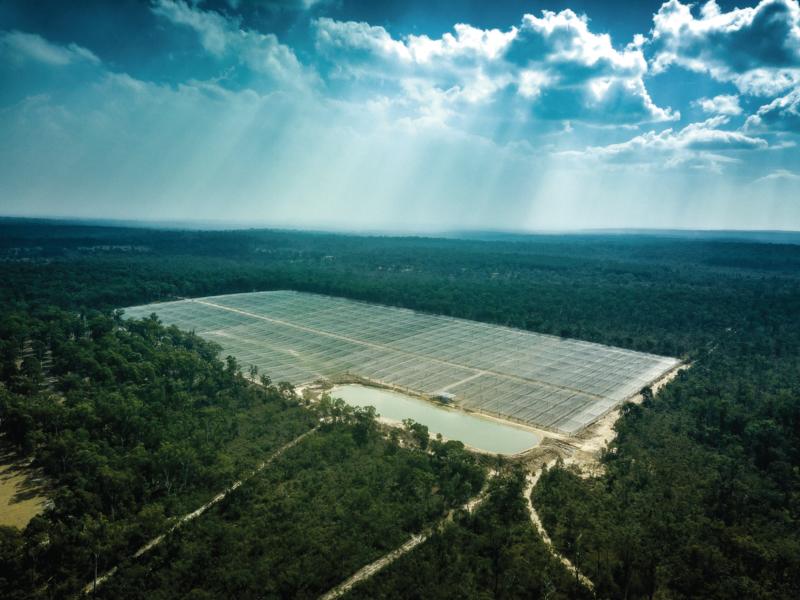 CLEAR GOALS: Nick Lalli’s blueberry operation sits at the back of his property in an area formerly cleared in the 1980s and has received permission to clear more land for production.
CLEAR GOALS: Nick Lalli’s blueberry operation sits at the back of his property in an area formerly cleared in the 1980s and has received permission to clear more land for production.
Nick says there wasn’t much use for the land to begin with. “It was a peach farm originally in the 1980s and they grew fine, but the DPI [Department of Primary Industries] stepped in and had the farm cleared because of the threat of fruit fly. Nothing has been done since, and now nothing grows here. The trees don’t even grow straight,” he says.
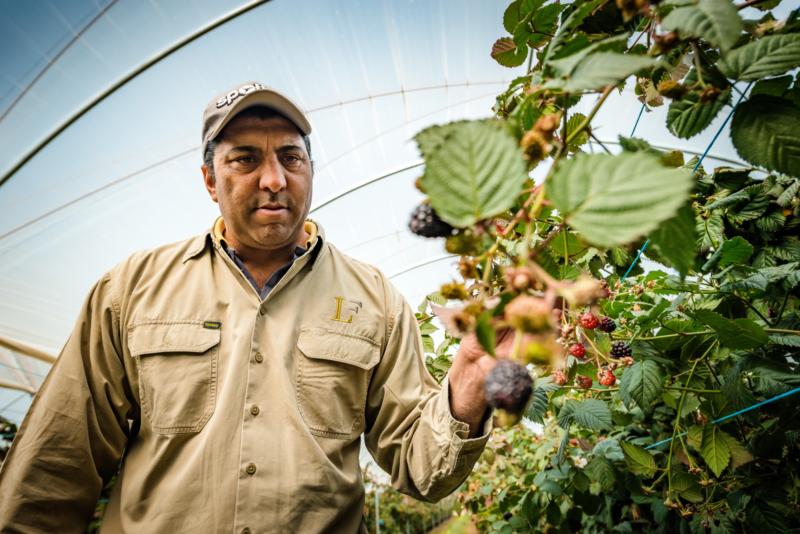 BEARING FRUIT: Nick inspects his blackberry crop.
BEARING FRUIT: Nick inspects his blackberry crop.
“The area is more of a scrappy type of bush land with quite acidic high-aluminum soils.” But he says it’s perfect for growing blueberries which require acidic soil with a pH of around 5.5. Nick has married the resources of the land with clever technology to master the art of berry growing in a spot many may have dismissed as an unproductive back block. “It’s worked out great for the berries and there’s around a dozen new blueberry growers in the area now,” he says.
When it came to clearing the land, Nick had to navigate the new native vegetation legislation codes, introduced in August 2017. He applied for an equity certificate to clear the land under Part 5, Division 4 of the Land Management (Native Vegetation) Code 2018, which deals with removing native vegetation from regulated rural areas. An equity certificate allows clearing of small areas in exchange for set-aside (conservation) areas containing remnant native vegetation.
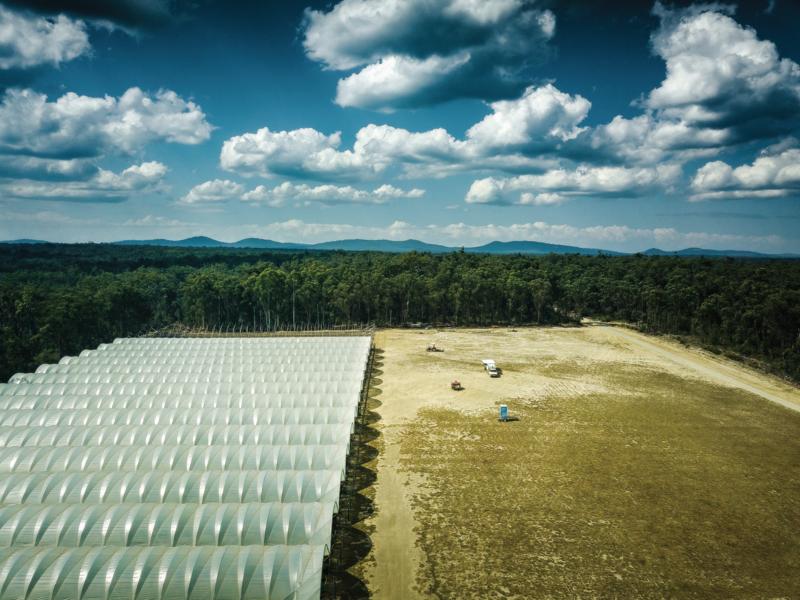 The fruit is farmed at the front of his Wells Crossing property in polytunnels, in an area cleared in 1982 by peach farmers.
WORKING TOGETHER: TREE CLEARING AND CONSERVATION
The fruit is farmed at the front of his Wells Crossing property in polytunnels, in an area cleared in 1982 by peach farmers.
WORKING TOGETHER: TREE CLEARING AND CONSERVATION
In mid-August, Nick received approval, with conditions attached. Under the equity certificate, he will be required to actively manage 10.7ha of his land as an in-perpetuity set-aside, to help maintain tracts of heathy woodlands containing needlebark, stringybark and red bloodwood trees.
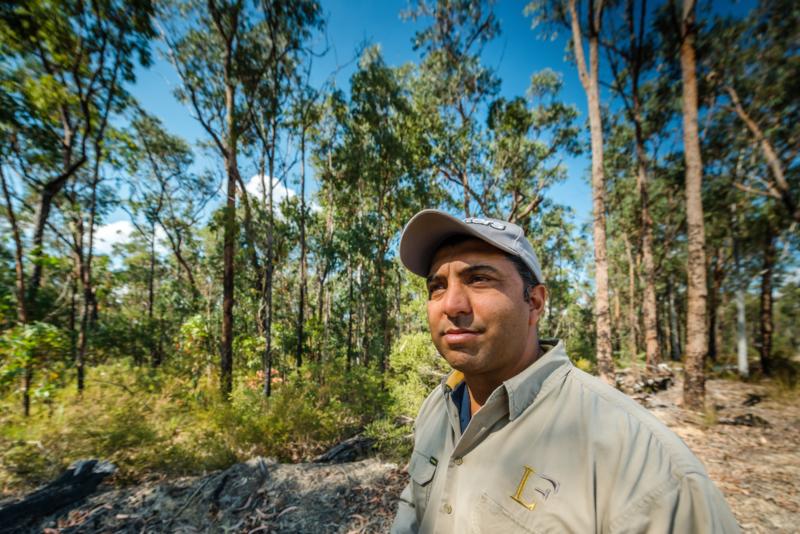
In the lead-up to receiving his certificate to clear, Nick worked with Local Land Services (LLS) on the assessment of the area to be conserved. He was impressed with the approach the auditors took.
“It’s been pretty smooth. They were the ones stressing on it, not me,” he says. “LLS visited half a dozen times. They spent seven or eight hours assessing the area to be cleared and conducting a flora and fauna audit. They took photographs and GPS readings, which were then sent to Sydney. We even had auditors from Victoria auditing the work the LLS were doing – auditing the auditors so to speak.”
The conservation area was chosen because it provides a corridor to large tracts of heavily timbered country on adjoining properties to the north and south. The area is in good condition with some weed incursion on the edges and Nick will be required to actively control weeds and participate in wild dog programs.
“I think most farmers have a pretty good idea about their property in terms of what you can and can’t clear, but the new codes allow you to do other things,” Nick says.
“With the previous land management policy, I wouldn’t have been able to clear my property at all. The new regulations have opened possibilities and allowed me to expand.”
“There’s a strip of timber between the polytunnels and the blueberries at the front of the property that we’ll clear – that’s where the blackberries are farmed.”
He says the demand is pretty high for the berries and he has managed to secure contracts with Coles and Woolworths through various accreditations. Nick plans to clear the area in the next few months and has ordered the plants, which will arrive in installments as nurseries are struggling to deliver a consistent supply. “Some will come in six weeks, some in October next year and then October 2020.”
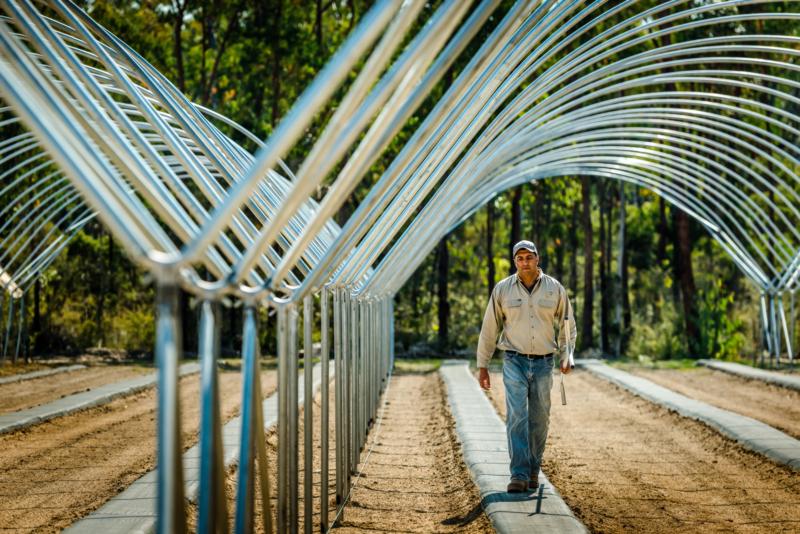 Installation of new polytunnels at Nick Lalli’s property.
Installation of new polytunnels at Nick Lalli’s property.
For now, he is focusing on getting the ground level. He estimates the expansion will generate additional jobs on his farm and thanks to the new variety fruits in the off-season, it will allow him to retain workers year round. During peak season, Nick says he has up to 60 people working each day. “Removing the vegetation from one section of the property will unlock massive opportunities, not just for me but for the whole district,” he says.
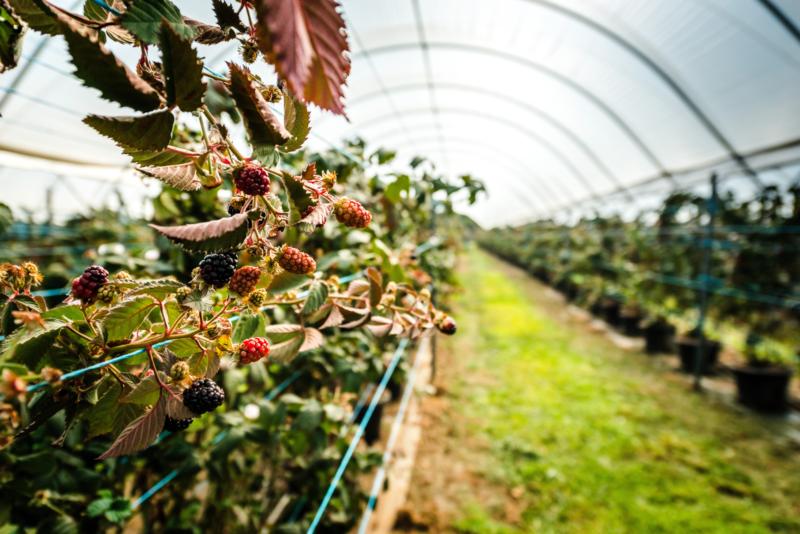 NATIVE VEGETATION: A YEAR IN REVIEW
NATIVE VEGETATION: A YEAR IN REVIEW
Nick is not alone in having to get to grips with the new native vegetation codes. One year on from the introduction of the Land Management (Native Vegetation) Code 2017, which was replaced by the 2018 version, more than 3,200 landholders have sought advice and referrals, attended workshops and hosted visits from LLS.
According to LLS, as of early September, 361 farmers have received authorisation under the new land management framework to manage their land, which in some cases has required setting aside other areas of native vegetation for ongoing biodiversity conservation.
But not everyone is happy. At the NSW Farmers conference in July, native vegetation reform was the most hotly debated topic. Many concerns were raised around the Native Vegetation Regulatory Map, prepared by the Office of Environment and Heritage (OEH) to categorise land where management of native vegetation can occur with – and without – approval.
The aerial mapping was widely criticised as being inaccurate and failing to distinguish one type of tree or shrub from another. Mitchell Clapham, chair of NSW Farmers’ Native Vegetation Working Group, told conference delegates the map couldn’t tell the difference between eucalyptus trees and blackberries on his property in the Central Tablelands.
*RELATED ARTICLE: Native vegetation mapping controversy
The first five motions proposed at the conference were all about native vegetation legislation and all were carried. The motions, in summary, were:
●
That NSW Farmers lobby the state government to ensure release of the Native Vegetation Regulatory Map does not occur unless NSW Farmers agrees, and that no mapped area has regulatory force unless certified correct by the landowner.
●
That NSW Farmers lobby the state government to amend relevant land management codes under the Local Land Services Act to remove the impractical retention requirements for invasive native species, and amend impractical and inequitable restrictions on land over 18 degrees.
●
That NSW Farmers insist the NSW government make amendments to the Biodiversity Conservation Act so that the onus of proof lies with the prosecutor and not with the landholder, and that landholders who are alleged to have committed an offence of clearing native vegetation are entitled to the same legal protections – such as the right to silence and protection against self-incrimination – as persons who are accused of committing an offence in NSW.
●
That NSW government urgently progress development of a new regulatory code for the management of non-endemic native species and spreading weed-like native species under the current biodiversity laws.
●
That NSW Farmers urge the OEH that compliance practices regarding non-permitted activities under the Native Vegetation Act are initially dealt with under a retrospective permission process before proceeding to a prosecution-based compliance process.
SO WHY NEW NATIVE VEGETATION LEGISLATION?
Kristian Holz, group director of the LLS Sustainable Land Management unit, says the new legislation acknowledges the previous native vegetation framework was too complex and relations between farmers and government bodies were fractured. He says the previous legislation promoted an unfair standard and farmers were being subjected to more rigorous regulation than, say, a property developer might be.
“We are trying to level the playing field, to have a framework that fits the purpose and is up-to-date with farming practices,” Kristian says, adding that many of the rules were not keeping pace with changes in technology.
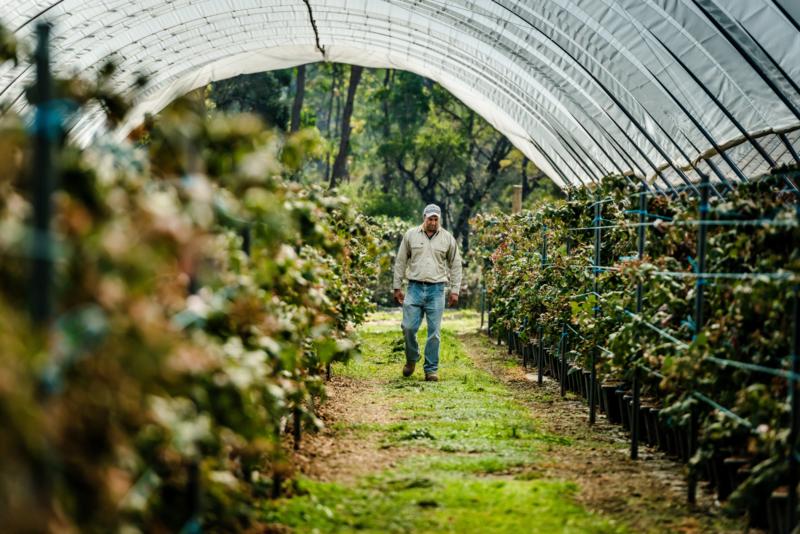 TUNNEL VISION: The blackberries grow in pots filled with soil substrates manufactured in the Netherlands that contain peat moss, buffered coir and perlite.
TUNNEL VISION: The blackberries grow in pots filled with soil substrates manufactured in the Netherlands that contain peat moss, buffered coir and perlite.
“The former regime often made it difficult for farmers to increase their productivity. For example, I’ve come across farmers who wanted to install centre-pivot irrigation systems, but they had three or four paddock trees they weren’t able to move. Now, they can do so and increase their productivity and water use efficiency. The old framework couldn’t cope with these scenarios.”
NSW Farmers’ Mitchell Clapham says the new legislation is a step in the right direction, but there is still work to be done. “There are a few warts on it that we want to work with the state government to remove, especially in the North West in relation to stem retention in invasive native species,” he says.
“But in the south of the state they can now remove their scattered paddock trees. They have to put them back at a ratio of eight-to-one, but in centre-pivot systems that’s not a problem. There’s plenty of room in the corners for trees. That is the sort of thing that is really positive for agriculture, and will be a great benefit for biodiversity and for the environment in those areas.”
*RELATED ARTICLE: “Putting a price on conservation”
NATIVE VEGETATION - IT'S ALL IN THE DETAILS
One sticking point in the native vegetation management overhaul is the overlay of Commonwealth legislation. Under the federal Environment Protection and Biodiversity Conservation Act 1999 (EPBC Act), the area given over to recovery plans for critically endangered and ecologically threatened species has increased dramatically. “We have lobbied the government extensively on the seriousness of the situation at the federal level,” says Mitchell. “This has brought about the EPBC review, currently being conducted by Dr Wendy Craik.”
Mitchell says some of the ecologically endangered species listed under the EPBC Act for NSW, such as wallaby grass, red grass and spear grass, are in fact growing prolifically in areas such as the NSW Central Tablelands. This impacts the ability of the landholder to manage areas where these species are present.
“It is easy for ecologists to sit around a table and make recommendations to government for the need to protect things, but as is so often the case, it is completely void of practical application,” Mitchell Clapham says.
“This is what we saw with the previous state legislation and it is unworkable. The mentality to lock up and leave, and not manage, sends biodiversity backwards,” Mitchell says.
Kristian Holz agrees the federal regulations are not appropriate for every situation, such as in the case of the southern NSW grasslands. “Their system is a bit like our old Native Vegetation Act – it doesn’t work very well. It’s caused conflict with landholders so we’ve engaged the Commonwealth and now they’re in the tent, if you like.”
LLS has brought the Commonwealth in on fieldwork led by senior LLS officer David Eddy in a pilot project in the Cooma Monaro region. This work, once complete, aims to cut red tape and offer practical solutions for landholders making decisions in their paddocks. “We are able to say to the Commonwealth, ‘The rules and regulations you write in Canberra – this is why it’s a problem’. When we can make that connection for them, they can see it,” Kristian says.
Earlier in the year, NSW Farmers welcomed an announcement that the federal government would be reviewing elements of the EPBC Act that affect agriculture. The Association’s then-president Derek Schoen said the Act both duplicated and conflicted with state laws, preventing management of both native invasive plant species and introduced weeds in many instances.
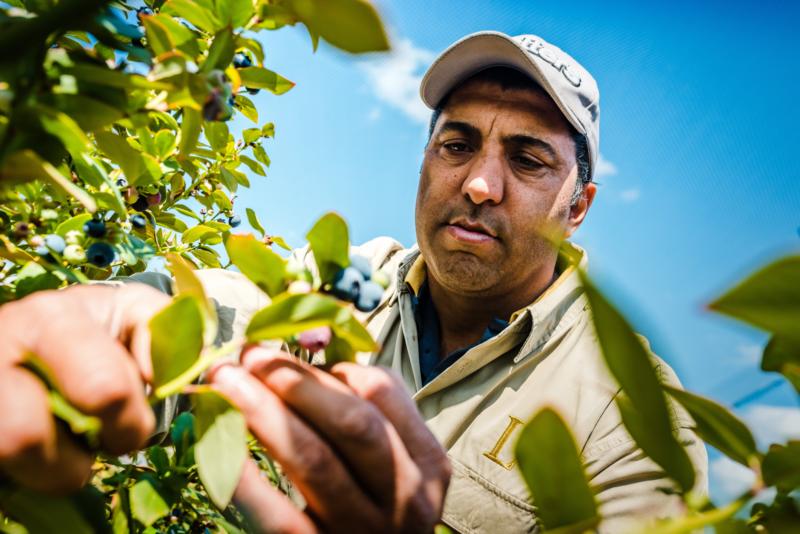 GRASSLAND CONFUSION
GRASSLAND CONFUSION
The controversial Native Vegetation Regulatory Map was initially intended to cover all rural land in NSW, regulating where clearing of native vegetation could occur and where it was restricted. However major shortcomings were unearthed when it was applied to grasslands, as the technology is unable to distinguish between native and introduced pasture species.
Following protests from landholders, LLS worked with the OEH to remove grasslands from regulatory mapping until a more reliable technology could be found. The conservation value is now determined by the Interim Grasslands and other Groundcover Assessment Method. If landholders believe their land has been categorised incorrectly, they can apply for a Landholder Initiated Map Review.
WHERE NATIVE VEGETATION LEGISLATION IS WORKING...
Troy and Shellee Hollis run 155 head of Fleckvieh cattle on 344ha at Bodalla, South East NSW. Their Lizzy Valley stud, Elizabeth Farm, includes low-lying areas prone to flooding as well as higher elevation areas suitable for grazing. Feral pigs have disturbed some areas and Japanese honeysuckle is encroaching on the growth of native vegetation on the farm.
The Hollises applied for, and were granted, an equity certificate to clear small paddock trees and small areas of native vegetation in cultivated land. This will allow them to extend their pastures beyond flood-prone flats by gradual clearing 41ha over the next 15 years.
As part of the certificate, they will also establish a 83ha set-aside area and they are commencing a pig eradication program, Japanese honeysuckle removal and mosaic burning to support native seed germination and grass cover.
By improving productivity, Troy and Shellee estimate an annual increase of 35,000kg liveweight of beef as a result of increasing their herd by 100 head, which will deliver an extra $100,000 in gross turnover.
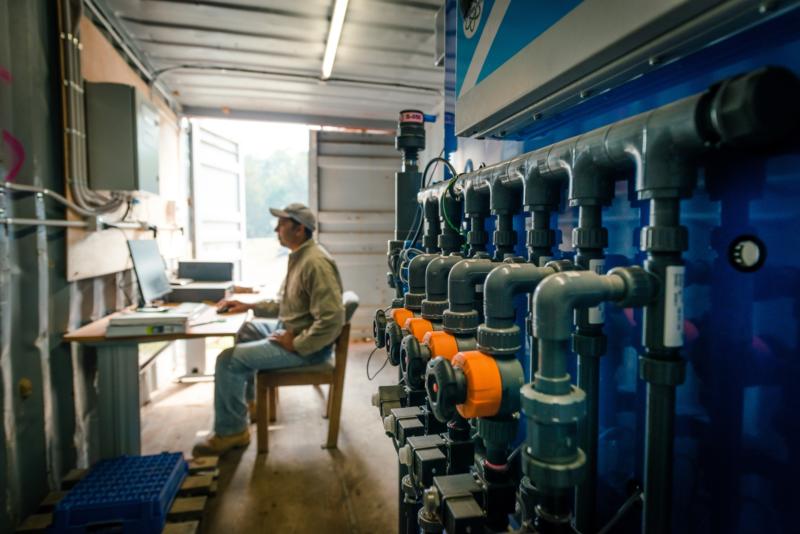 THE SHIPPING LIFE: Nick in his farm office, which is housed in a shipping container – one of many that have been put to good use on his property.
HI-TECH BERRY BUSINESS
THE SHIPPING LIFE: Nick in his farm office, which is housed in a shipping container – one of many that have been put to good use on his property.
HI-TECH BERRY BUSINESS
High-tech berry
business
Nick Lalli is all about on-farm efficiency so he’s taken a liking to shipping containers as opposed to the traditional shed. “There’s multiple departments in a shed – with shipping containers it’s just easier, you label them and lock them up,” he says.
He uses the containers for every part of his berry business – for storage, chemicals, packing and now his office, which houses the farm’s computer-driven substrate control system. The system injects measured fertiliser mixes into the irrigation pipes for the berries and controls the pH and electrical conductivity – a good measure of the dissolved mineral salts in the water.
Nick says weather and light sensors determine water and fertiliser quantities and as the day becomes overcast, it slows down. “You’re never wasting water and fertiliser and if anything goes wrong it sends an alarm to your phone,” Nick says.